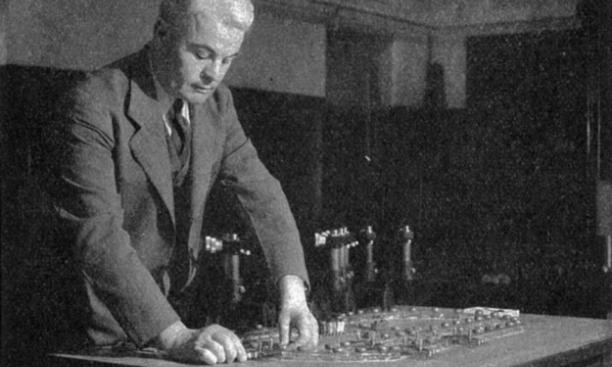
[

In the summer of 1933, Princeton professor George E. Beggs, above, and Elmer K. Timby made and tested a celluloid scale model of a tower of the Golden Gate Bridge, using a technique that Beggs had invented to test the stress resistance of bridges and other structures. (In the photo, heâs working with a model of the proposed Camden-Philadelphia Tunnel.) Their work attracted nationwide attention, and Beggsâ method has since been used by engineers worldwide. Engineering, however, did not always take center stage at Princeton. In fact, engineering did not come to Princeton until 1875 â more than a century after the Universityâs founding in 1746. Until the 1920s, course offerings were limited to civil engineering for undergrads and electrical engineering for graduate students. In a predominantly liberal-arts campus, it seemed, engineering remained on the sidelines. To bridge the gap between technical training and a liberal-arts education, the University created an âengineering plusâ program in 1921. In essence, engineering education was to be liberalized: Undergraduate engineers would be trained in both technical fundamentals as well as cultural and humanistic studies. Fourteen years later, Carlton S. Proctor 1915, a future president of the American Society of Engineers, penned an enthusiastic overview of the program in PAW, calling it âa distinctly Princeton education.â
